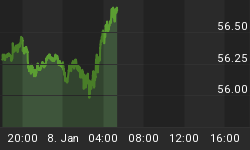By now you know that last Friday the U.S. unemployment rate was reported for September to have fallen to 7.8% in the face of a reported 114,000 net new September jobs, and net new jobs for July and August being reported as having increased by a cumulative 86,000 jobs.
On the face of things, given the oft-reported monthly U.S. net new jobs requirement of 150,000 just to keep even with the monthly U.S. population growth, the reported drop in the reported unemployment rate to 7.8% almost certainly has to be the result of more Americans ceasing in September to look for jobs.
Moreover, a very important question is: are all jobs created equal? The American overall net new jobs and unemployment numbers seem not to distinguish between part-time and full-time jobs, or provide immediate data on the average hourly wage rates of net new jobs.
A Wall Street Journal article titled Why Did the Unemployment Rate Drop suggests a 'broader U.S. unemployment rate measure was unchanged in September and held at 14.7% in September'. This broader measure, referred to as U-6 by the U.S. Labor Department, includes both the officially employed plus what are called 'marginally attached workers'. Marginally attached workers are those people who are:
-
not working or looking for a job but have looked recently for a job; and,
-
working part-time but continue to look for full-time jobs.
Aside from all this being more than a little confusing, in the end it seems that while on the surface the 7.8% reported unemployment rate is encouraging, the water below is murky and very likely anyone who swims in it is susceptible to shark attacks.
You also might want to read New Model to Predict Unemployment Sees Rate at 8.1% that appeared in the Wall Street Journal Real Time Economics Blog on October 2. That article references a paper published in September that set out a new method for forecasting the U.S. unemployment rate which suggests the U.S. September unemployment rate was 8.1%, and that it will gradually improve to 7.1% over the course of 2013. However, the question: 'are all jobs equal?' - which of course they are not - seems not have been addressed in that paper. If interested, you can read the underlying paper titled The Ins and Outs of Forecasting Unemployment: Using labor Force Flows to Forecast the Labor Market.
Topical References: U.S. jobless rate tumbles to near four-year low, from Reuters, Lucia Mitikani, October 5, 2012 - reading time 3 minutes. Also see:
-
Why Did the Unemployment Rate Drop? from The Wall Street Journal Real Time Economics, Phil Izzo, October 5, 2012 - reading time 2 minutes.
-
New Model to Predict Unemployment Sees Rate at 8.1%, from The Wall Street Journal Real Time Economics, Ben Casselman, October 3, 2012 - reading time 2 minutes.
-
New Unemployment Model Can Outperform Fed and Professional Forecasters, from Brookings, September 13, 2012 - reading time 2 minutes.
















